Jiaxin Cao
DistriFusion: Distributed Parallel Inference for High-Resolution Diffusion Models
Mar 07, 2024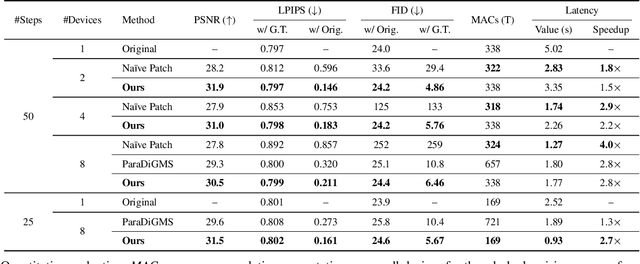
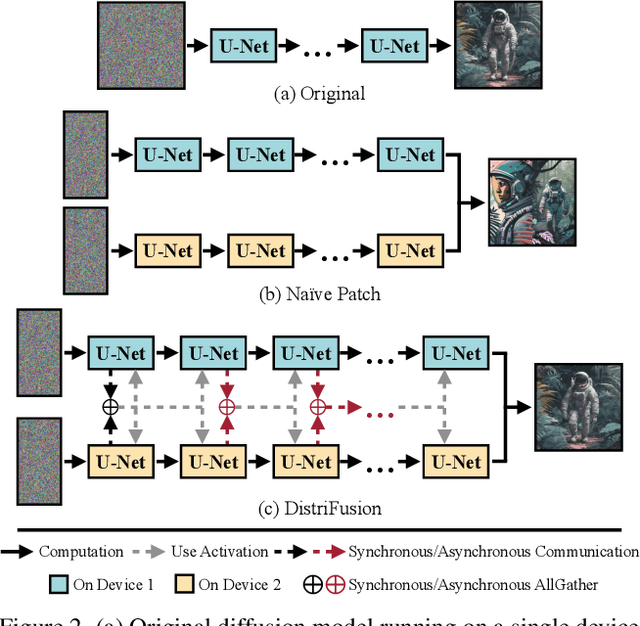
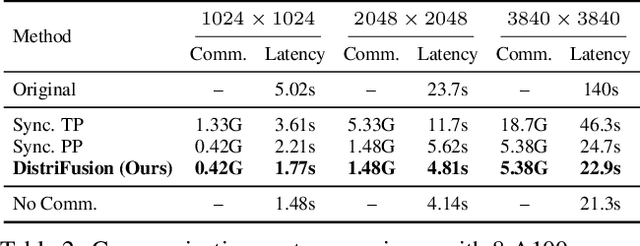
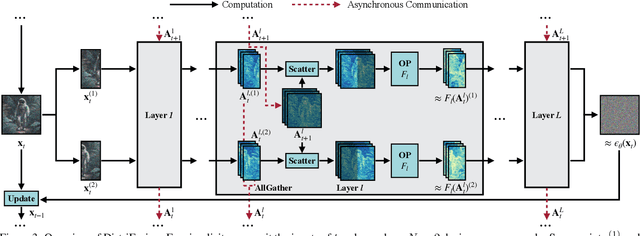
Abstract:Diffusion models have achieved great success in synthesizing high-quality images. However, generating high-resolution images with diffusion models is still challenging due to the enormous computational costs, resulting in a prohibitive latency for interactive applications. In this paper, we propose DistriFusion to tackle this problem by leveraging parallelism across multiple GPUs. Our method splits the model input into multiple patches and assigns each patch to a GPU. However, naively implementing such an algorithm breaks the interaction between patches and loses fidelity, while incorporating such an interaction will incur tremendous communication overhead. To overcome this dilemma, we observe the high similarity between the input from adjacent diffusion steps and propose displaced patch parallelism, which takes advantage of the sequential nature of the diffusion process by reusing the pre-computed feature maps from the previous timestep to provide context for the current step. Therefore, our method supports asynchronous communication, which can be pipelined by computation. Extensive experiments show that our method can be applied to recent Stable Diffusion XL with no quality degradation and achieve up to a 6.1$\times$ speedup on eight NVIDIA A100s compared to one. Our code is publicly available at https://github.com/mit-han-lab/distrifuser.
Bidirectional Pricing and Demand Response for Nanogrids with HVAC Systems
Mar 01, 2022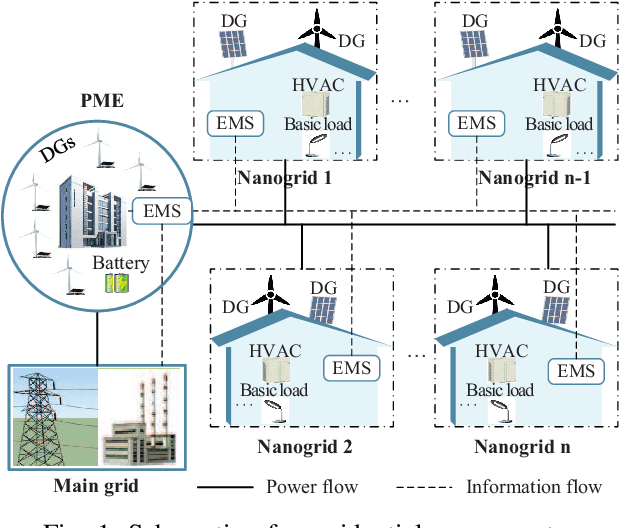

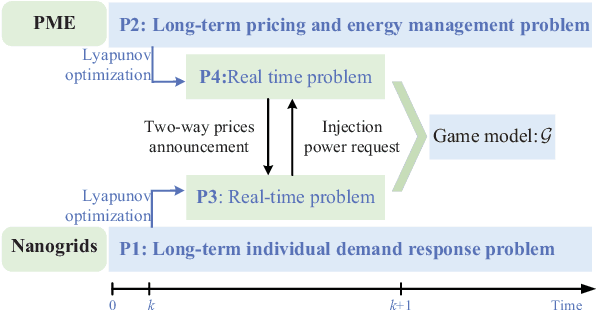
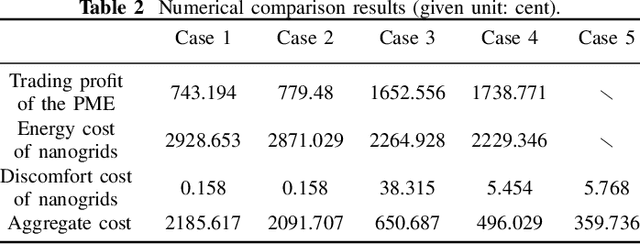
Abstract:Owing to the fluctuant renewable generation and power demand, the energy surplus or deficit in each nanogrid is embodied differently across time. To stimulate local renewable energy consumption and minimize the long-term energy cost, some issues still remain to be explored: when and how the energy demand and bidirectional trading prices are scheduled considering personal comfort preferences and environmental factors. For this purpose, the demand response and two-way pricing problems concurrently for nanogrids and a public monitoring entity (PME) are studied with exploiting the large potential thermal elastic ability of heating, ventilation and air-conditioning (HVAC) units. Different from nanogrids, in terms of minimizing time-average costs, PME aims to set reasonable prices and optimize profits by trading with nanogrids and the main grid bi-directionally. In particular, such bilevel energy management problem is formulated as a stochastic form in a long-term horizon. Since there are uncertain system parameters, time-coupled queue constraints and the interplay of bilevel decision-making, it is challenging to solve the formulated problems. To this end, we derive a form of relaxation based on Lyapunov optimization technique to make the energy management problem tractable without forecasting the related system parameters. The transaction between nanogrids and PME is captured by a one-leader and multi-follower Stackelberg game framework. Then, theoretical analysis of the existence and uniqueness of Stackelberg equilibrium (SE) is developed based on the proposed game property. Following that, we devise an optimization algorithm to reach the SE with less information exchange. Numerical experiments validate the effectiveness of the proposed approach.
A 3D 2D convolutional Neural Network Model for Hyperspectral Image Classification
Nov 19, 2021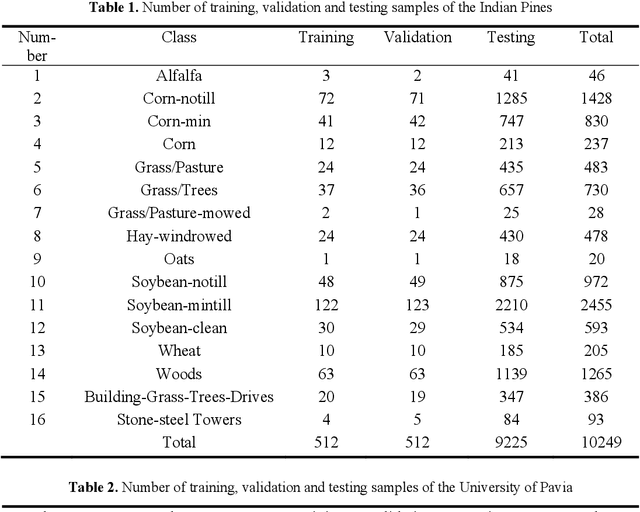
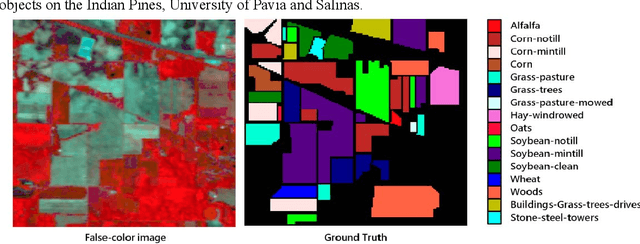
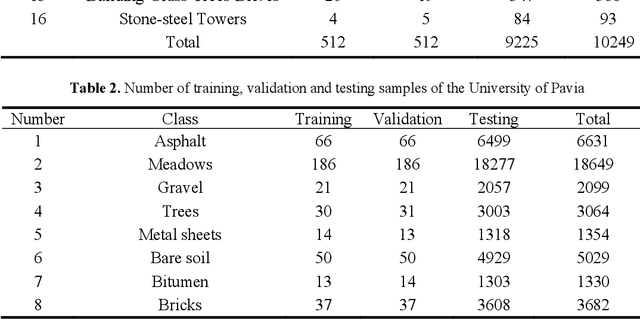
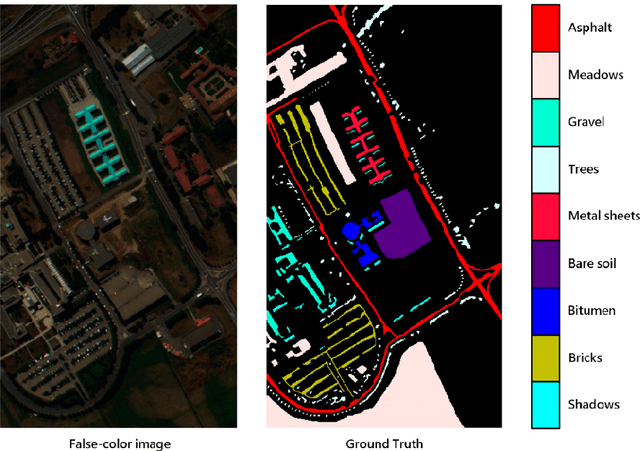
Abstract:In the proposed SEHybridSN model, a dense block was used to reuse shallow feature and aimed at better exploiting hierarchical spatial spectral feature. Subsequent depth separable convolutional layers were used to discriminate the spatial information. Further refinement of spatial spectral features was realized by the channel attention method, which were performed behind every 3D convolutional layer and every 2D convolutional layer. Experiment results indicate that our proposed model learn more discriminative spatial spectral features using very few training data. SEHybridSN using only 0.05 and 0.01 labeled data for training, a very satisfactory performance is obtained.
 Add to Chrome
Add to Chrome Add to Firefox
Add to Firefox Add to Edge
Add to Edge